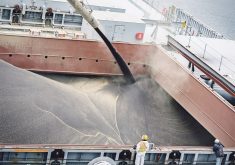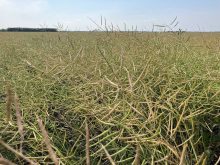UPDATED – March 12, 2025 – 1315 CST – Threatened U.S. tariffs may have been postponed until April, but many questions remain.
Will they ever be imposed. If so, how long would they last? Would they be increased? How much damage would they cause? How much damage would Canadian counter-tariffs cause?
The end result is increased uncertainty, coming mere months before Prairie farmers prepare to put their next crop in the ground.
Read Also

House ag committee to undertake several studies
The House of Commons standing agriculture committee has set its agenda for the coming months. Members began the fall sitting with a two-hour update on international trade
Among the many questions is what to do about farmland rental agreements.
Many landowners and their renters may already have deals in place for this year, but many don’t.
Deciding how much rent to charge or pay has become increasingly difficult, particularly since the Alberta and Saskatchewan governments stopped publishing surveys on land leasing in 2020, turning rental rate decisions into more of a guessing game than ever.
Last year, a Manitoba Agriculture official called land rents a “dark market.”
There are rules of thumb that producers and landowners can use, such as rent versus land values. FCC said in a report published last year that the ratio of farmland to rent is around 2.5 per cent.
The simplest way, of course, is to let renters decide how badly they want the land. The stronger the interest, the higher the rent.
However, a more logical gauge is producer profitability. If it looks like renters are going to make more money from the land in any given year, then one would think the rent should be higher. If profits are in trouble, then perhaps rents should fall.
This is a year when profits aren’t looking that great, but both producers and landowners had a pretty good idea what they were going to be.
The most recent indicators were the provincial crop insurance coverage packages for 2025. Profitability wasn’t great, but renters and landowners knew where they stood.
However, the tariff turmoil has upended all that.
At this point, months away from seeding, what tariffs would do to commodity prices is anyone’s guess.
It will depend on what’s grown, of course, but the most vulnerable crop — canola — is also one of farmers’ biggest money-makers. It will be interesting to see what farmers do.
And it’s not just grain prices.
Many of Prairie farmers’ crop inputs make trips across the 49th parallel. Determining what tariffs and counter-tariffs would do to input prices is another wild card.
For renters and landlords who use profitability projections to determine rental rates, their calculations have become a great deal more complicated.
So what to do?
One possibility is to take another look at crop sharing.
The practice hasn’t completely died out, but cash rent deals have certainly gained ground in recent years. Maybe it’s time to take another look at crop sharing as a way to mitigate risk.
A Saskatchewan farmland realtor said last year that a producer’s best bet is to maintain a personal relationship with their landlord.
“Get in the truck, go drive to their house, sit down with them, have a coffee, have a meal, have a drink, block the afternoon off.”
It’s not going to wipe away the chaos and uncertainty, but it’s a good place to start.
Ultimately, if we’re going to get through this tumultuous time, it will be more important than ever to work together and be creative.
Karen Briere, Bruce Dyck, Robin Booker, Paul Yanko and Laura Rance collaborate in the writing of Western Producer editorials.

















